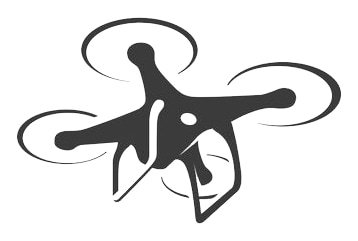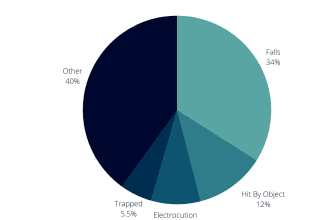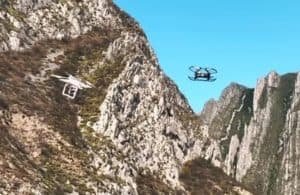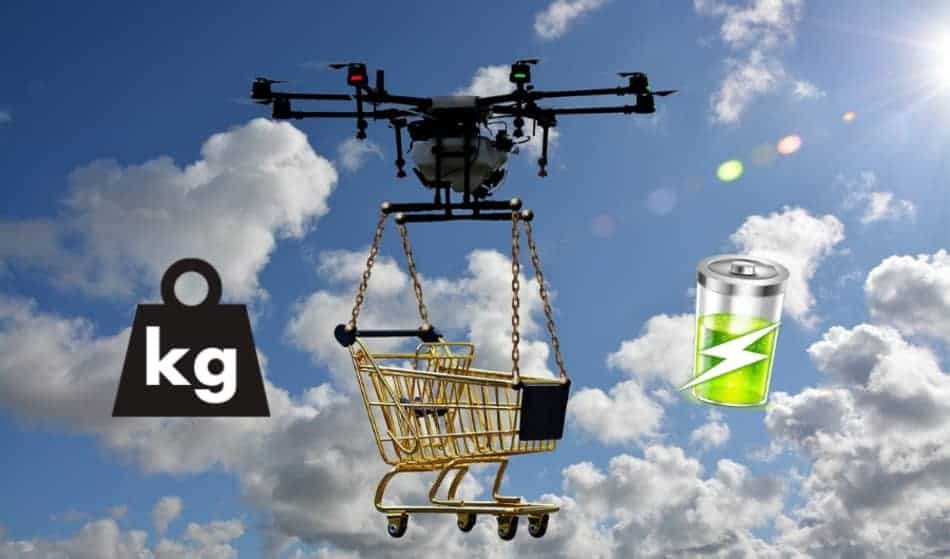
Drones are now used for all sorts of purposes, such as aerial photography, hobby flying, surveillance, as well as scientific research. However, weight is a critical parameter when it comes to flight, and it introduces a big challenge, though. So many small drones today have a short battery life, which means they don’t have much time to stay in the air before the battery deples and needs to be recharged again. Also for drone to stay in the air, he must generate upward force (push) that overcomes the downward force (pull) of its weight due to gravity.
So Does Weight Affect a Drone’s Battery Life? By increasing a drone’s weight, the propellers have to spin faster to generate more lift for drone to stay in the air. And by spinning those propellers faster, the more energy is wasted, which drains the battery quickly. Therefore by adding extra weight to the drone the battery life is shorter.
- Example: How Adding Extra Weight Affects The Drone Battery
- Conclusion:
- Choosing the Right Battery For Your Drone
- 1. Energy Density
- 2. Discharge Rate
- 3. Voltage
- 4. Weight
- 5. Discharge Curve
- Different Types Of Drones’s Batteries
- 1. Lithium Polymer (LiPo) Batteries
- 2. Lithium-ion (Li-ion) Batteries
- 3. Lithium Iron Phosphate (LiFePo4) Batteries
- Factors That Explain How Much Weight Drone Can Carry
- Drone With Longest Flight Time 2019
- Drone (Propeller) Thrust Vs Battery Life
- Cycle Life of Battery
- Whats The Future Of Drone’s Battery Life?
- How Long Can a Drone Fly?
- How Long Can Batteries Last?
Example: How Adding Extra Weight Affects The Drone Battery
Here we do an experiment with a drone (quadcopter) by adding extra weight and measure how that weight will affect the battery life of a drone. We will try to explain everything in detail. The drone that will be used in this experiment is the Parrot AR Drone. By this we will take all the variables that affect drone and battery life such as camera. We will see how camera will affect battery life on Parrot AR Drone.
Drone: Parrot AR
The results of the experiment:
| Weight added (g) | Battery life (s) |
|---|---|
| 0 | 546.6 |
| 16 | 517.3 |
| 28 | 501.0 |
| 36 | 482.3 |
| 54 | 461.3 |
| 78 | 449.6 |
| 86 | 393.3 |
| 94 | 364.3 |
| 106 | 337.6 |
Conclusion:
As we could see in the experiment above, the weight that is added affected on the battery life of the drone. Camera that was used here was GoPro (proffesional camera that is used by many drone fans), and weighed 130 grams. We could also conclude some interesting things out of this experiment such as by adding extra weight we lose the control of the drone (quadcopter) in the air. The drone could probably carry more weight but that would significantly reduce the battery life. The last thing I would mention is that Parrot AR Drone weighs only 380 grams, which he falls into a mid league drones, which indicates that such types of drones are not intended for carrying a camera in the first place. What we have concluded is that the mass had a direct effect to the acceleration of the drone
Choosing the Right Battery For Your Drone
Batteries can have the characteristics of long life, high capacity, high energy, deep discharge, fast charging, or other defined parameters, and there are several parameters that tell exactly what each of these terms means. But how do you choose the best battery for your drone? We will clarify here, what are the most important factors when choosing the ideal battery for your drone:
1. Energy Density
What is very important when choosing a battery is energy density. mAh is a unit of measurement that is essential in this feature, and it tells how much energy a battery can store per unit volume. It also determines that this battery has the capacity to store more energy than others because of its chemical composition.

2. Discharge Rate
When we talk about discharge, we mean how much energy a battery can deliver in a given time. For example, the C-rate can be measured by the rate at which we know that the battery is discharged at maximum capacity. When we talk about batteries that have a low discharge rate, we know that these are batteries that will last longer than others. A rate of 1C means that the discharge current will drain the entire battery in one hour.

3. Voltage
Voltage is very important for the batteries, we need to know that Lithium-Ion batteries have 3.7V per cell, while fully charged batteries have about 4.2V. Most battery systems have an ESC that responds automatically when the battery drops below 3V.

4. Weight
The best choice for a battery would be to have as much specific energy per unit volume as possible. Doing so will drastically reduce the weight of your battery, which will prolong the flight time, but you must also take care that this excess energy does not destroy your ESC.
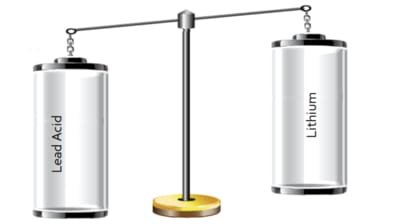
5. Discharge Curve
Energy cells have been developed for a wide range of applications used in a variety of technologies, resulting in a wide range of features available. The graphs for discharge curve show us some of the major factors that an engineer should consider when determining a battery to meet certain end product requirements.
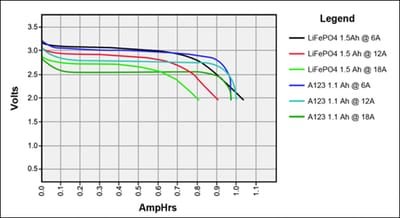
Also, this is one of the ways in which battery life can be monitored. You can do this by making a chart that measures how long your drone stays in the air and at the same time records the battery discharge time relative to its value C. This will allow you to determine the best battery for your drone in relation to the flying time and the load carries. Check price, reviews and pics on Amazon for different types of drone batteries.
| Technical data | LiCoO2 | Li-Ion-Mn | LiFePO4 |
|---|---|---|---|
| Specific density energy (Wh/kg) |
150-190 | 100-135 | 90-120 |
| Internal resistance | 150-300 7.2 V |
25-75 Per cell |
25-50 Per cell |
| Lifetime | 500-1000 | 500-1000 | 1000-2000 |
| Fast Charge Time | 2-4 hours | 1 hour or less | 1 hour or less |
| Overload tolerance | Low | Low | Low |
| Self-discharge / month | <10% | <10% | <10% |
| Cell voltage | 3,6V | 3,8V | 3,3V |
| Charging temperature | 0 do 45 C | 0 do 45 C | 0 do 45 C |
| Discharge temperature | -20 do 60 C | -20 do 60 C | -20 do 60 C |
Different Types Of Drones’s Batteries
The most commonly used drones today have lithium batteries. But lithium batteries have different combinations, giving them different characteristics, such as the number of charging and discharging cycles, capacity, and energy. Therefore, it would be good to know the basic characteristics of individual batteries and thus choose the best fit for your drone.
1. Lithium Polymer (LiPo) Batteries
Lithium polymer is different from conventional battery systems in the type of electrolyte used. The original design from the 1970s uses a dry solid polymer electrolyte. For improvement, some gel electrolytes have been added. Commercial cells use a membrane separator/electrolyte prepared from polymer-filled polypropylene separators, the gel of which is filled with liquid electrolyte. Thus commercial lithium-ion polymer cells are very similar in chemistry and materials in their liquid electrolyte parts. The key targets for so-called “solid lithium-ion batteries” achieve sufficient room temperature conductivity and provide a sufficiently high number of charge cycles, which is a disadvantage with many new batteries. Prototypes of solid lithium-ion batteries achieve only 100 charge cycles. The disadvantages of this battery are the lower energy density and the reduced number of charge cycles compared to Li-ion batteries, which are expensive to produce.
2. Lithium-ion (Li-ion) Batteries
The beginnings of working with lithium batteries began in 1912. Li-ion is safe, with manufactured cells and battery packs following safety measures in maintaining voltages and currents at safety levels. Li-ion is twice better than NiCD regarding to the specific energy. Charging characteristics are good, and the discharge curve offers efficient use of stored energy in the voltage range of 3.70 to 2.80 V / cell. Common cathode materials are lithium cobalt oxide (or lithium cobaltate), lithium manganese oxide and lithium iron phosphate. There has never been so much work done to improve the battery in order to find new chemical compounds as it is today. The advantages of this battery are: high specific energy and satisfactory energy density, long cycles and extended shelf life; maintenance-free, closed cells that allow good flexibility.
3. Lithium Iron Phosphate (LiFePo4) Batteries
The latest lithium chemistry has brought accessibility and flexibility to standard and new applications. Li-phosphate offers good electrochemical performance with very little resistance. This is possible with the cathode material phosphate nano-scale. A process has been developed in which the lithium cathode is non-toxic, where conductivity has increased by more than 10 million times, providing the safety, efficiency, rapid charging process of energy sources that is available in standard and custom dimensions. LiFePo4 batteries are quite flexible in design, allowing for wide application. Li-phosphate has excellent safety and long life, but moderate specific energy and lower voltage than other lithium batteries. Li-phosphate also has a high self-discharge compared to other lithium-ion systems.
Factors That Explain How Much Weight Drone Can Carry
We have to consider that there is a number of factors that affect the drone’s payload capacity. The most important among them are the motor power, the size and number of propellers, type of battery and the weight of the drone. One of the factors we need to keep in mind is that the propeller thrust should be twice the total weight of the drone and the payload. Drones also need to know how to deal with wind, air pressure and moisture in the air which can drastically influence your drone. Drones that need a big lift requirement also needs a battery with a bigger capacity, which also adds weight to the drone. Heavy lift drones beside extra weight that they need to carry also need a strong and durable drone frame which is heavier than the standard lightweight construcion of the hobby drones.
There is also one very important thing besides from adding the payload to the drone, and that is take-off weight or capacity that drone must use to take off which we must take into consideration. Take-off weight is usually the heftiest capacity the drone can handle for it to fly without any complications. Because there are still a couple of factors that are here like battery life, and control of the drone in the air while carrying the payload.

Drone With Longest Flight Time 2019
Nobody likes short battery times with their drones. It is very desirable to have long drone flight time. Drone flying time is very limited, most of the drones have average 15-30 minutes flying time. These are the drones that have the longest flight time for now.
| Model: | Range: | Flight Time: |
|---|---|---|
| DJI Mavic 2 (Available on Amazon) | 7000m | 27 min |
| DJI Phantom 4 Pro (Available on Amazon) | 7000m | 27 min |
| Parrot Bebop 2 (Available on Amazon) | 2000m | 21 min |
| Yuneec YUNH920 (Available on Amazon) | 1500m | 25 min |
Drone (Propeller) Thrust Vs Battery Life
One of the very common terms when we talk about drones is Thrust. So what does the propeller thrust mean in terms of speed and how physics affects it? Drone Thrust can be defined when your drone uses full throttle, and producing as much upward force as possible. With that you can determine how much the drone can lift by the thrust a drone generates. Drone thrust must be greater than the weight of the drone, for that drone to take off and actually fly. When a drone propeller is in a moving situation, the thrust changes. When the drone throttle is at 100% the prop will be at maximum thrust. To know how much thrust your drone will produce for a given propeller, you have to test the motor thrust or read the instructions that manufacturers provide for your drone. But in reality, what to expect is to see 5 to 10% less thrust in real flight as compared to the bench tests. The more thrust drone provides, the better acceleration is, what provides greater impulse for the drone.
Cycle Life of Battery
This can be considered as one of the main parameter for displaying the battery life. When we talk about cycle life of a battery, we mean the number of charges and discharges that a battery can carry out before its capacity drops below 80% of baseline. This number of charging and discharging cycles in the battery also depends on the storage factor, as the temperature and load mode of the battery, because it also play a big role in how long the battery will last. Ideal conditions are the best way to increase the cycle life of a battery.

Whats The Future Of Drone’s Battery Life?
With today’s technology development this ratio of battery energy density has improve, but there is still plenty of room for improvement. Drones biggest problem so far was the battery limitation, but now that the boundary has been moved, the future for drones looks bright. Therefore, the main purpose for drones to fly and perform some basic things are no longer sufficient, we want them to do useful things in flight and to carry extra weight. There are a lot of drones that can carry much more than just a camera at their disposal. With this new rising market, you must know exactly what are you looking for. If you’re interested in the future of batteries, Advanced Batteries: Materials Science Aspects is one of the very instructive books where I learned a lot about batteries and their behavior.
How Long Can a Drone Fly?
Drone flying time is very limited and most of the drones have average 15-30 minutes flying time. The most common reasons why batteries on drones are so short is that motors that drive drones require a lot of energy. Cheap drones can fly only for 5 -10 minutes. Secondly, when energy is transferred in to or out of these batteries, heat is generated. Heat is a wasted energy from the batterie, and it is not good for battery because it reduces battery cycle life.
When choosing a battery for the Drone, the main thing we should look at are features such as capacity, safety, long duration and price. Batteries can have a long life characteristics, high capacity, high power, deep discharge, quick charge or other defined parameters. What’s important is battery capacity. Drones should choose the best battery that can store the most energy per unit of mass (Wh/kg). Lithium is the lightest of all metals, has the highest electrochemical potential and offers the highest specific energy by weight.
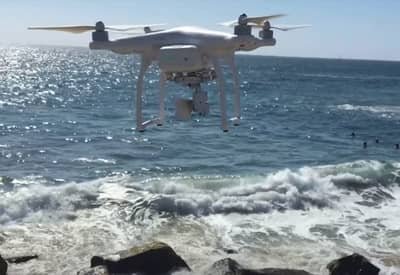
How Long Can Batteries Last?
Regardless of whether the battery is used or not, the battery performance deteriorates over time. Lifetimes of 500 to 1200 cycles are typical, which is approximately 6 years of use. When we talk about ageing process, it continues with the same rate as before so if the cell capacity falls to 80% after 1000 cycles, it will probably continue working to approximately 2000 cycles also. The most likely cause of battery failure of a battery is abuse, subjecting a battery to conditions for which it was never designed.
